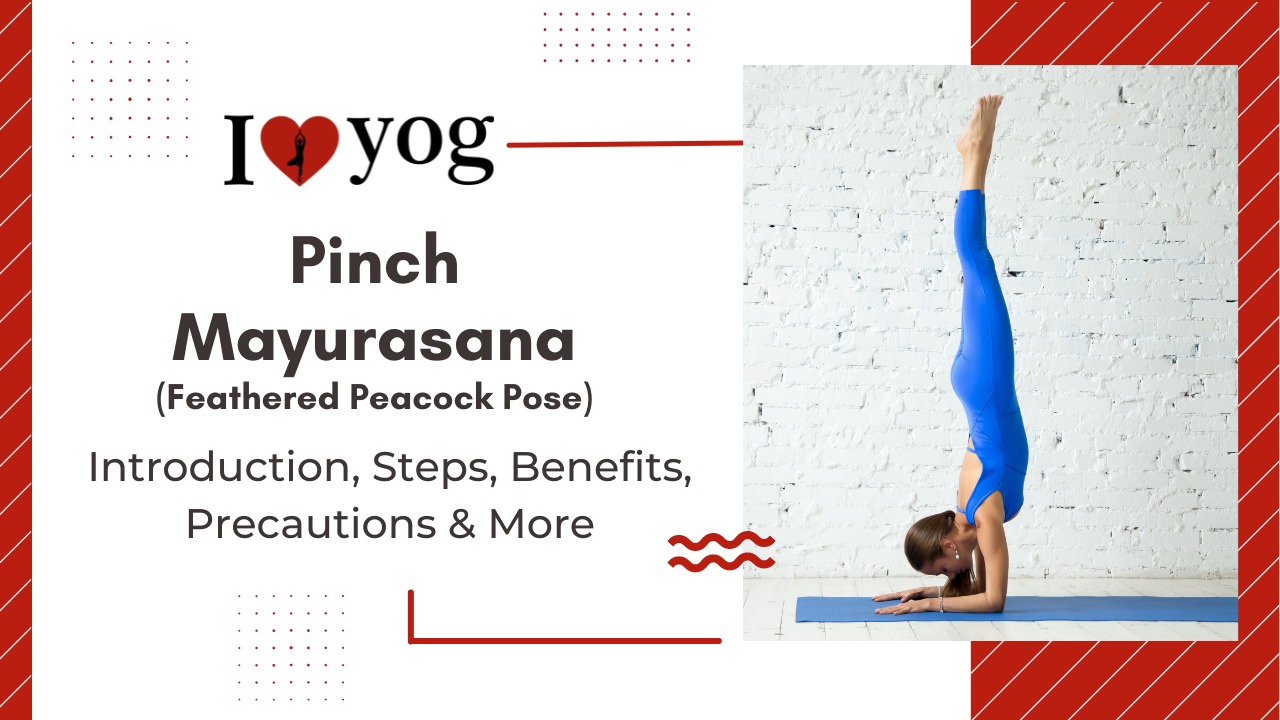What You Need to Know Before Attempting Pincha Mayurasana?
Pincha Mayurasana/Feathered Peacock Pose
Preparatory poses: Handstand, Adho mukha svanasana, Uttanasana, Gomukhasana, more
- Yogasana Level – Advanced
- Yogasana Style – Inversion
- Yogasana Repetitions – None
- Yogasana Strengthens – Shoulder, Arm, and Human Back
- Yogasana Stretches – Shoulder, Neck, Thorax, and Pelvic
Effect of Pincha Mayurasana/Feathered Peacock Pose on the tri dosha
Chakras: the Crown Chakra (Sahasrara Chakra), the Third Eye Chakra (Ajna Chakra), and the Throat Chakra (Vishuddha Chakra)
Dosha: Vata
How to Perform the Feathered Peacock Pose
- Start with your palms and forearms on the floor and your hands on the tabletop. At shoulder width, your forearms should be parallel to one another.
- Bend the left knee and step in with the left foot, extending the opposite leg into the heel to keep it active. Take a couple hops as practise.
- Sweep your active leg up while you kick your other foot off the ground and quickly apply pressure to the heel of your leg to straighten it. Try this many times, each time pushing off the ground slightly higher than the last.
- You will eventually be able to kick all the way up. You may first collide with it, but with practise you will be able to delicately raise your heels.
- Hold the posture for 10 to 15 seconds, working up to one minute. When descending, avoid sinking into the shoulders and withdraw each foot individually.
Benefits Of Pincha Mayurasana Yoga Posture/Asana?
These benefits include:
- One of the most significant benefits of Pincha Mayurasana is that it strengthens your shoulders and upper back. This upper-body strength is crucial for enhancing functioning and balance.
- As an inversion, Feathered Peacock Yoga Pose improves blood flow to the brain. This is one of the most essential advantages of Pincha Mayurasana for relaxing the brain, enhancing memory and focus, and relieving stress.
- Pincha Mayurasana provides a wonderful stretch and reduces joint tension and stiffness.
- One of the most essential benefits of Pincha Mayurasana is that, because maintaining balance during this asana involves a great deal of attention, frequent practise of this asana also improves your focus in everyday life
- Since this asana requires no sophisticated setup, it may be readily included into home training.
What Are the Contraindications and Precautions for Pincha Mayurasana?
- Recent injuries in the back, shoulder, arm, or neck traumas
- Heart disease
- Irregular blood pressure
- Menstruation
- During pregnancy, avoid practising this pose. It may be safe for some pregnant women to perform this pose during the first trimester, but this is dependent on the woman’s health. Consult an experienced yoga instructor.
What Is the Science Behind Feathered Peacock Pose?
In this posture, maintain your shoulder blades elevated and widened while pressing your forearms, wrists, and palms into the ground to create a stable platform. Pull your abdomen in toward your spine and press your knees together, then relax your head and allow it to hang between your triceps. Beginners may find it beneficial to practise Pincha Mayurasana along a wall while learning to achieve balance
As you get physically stronger in Forearm Balance, your confidence and patience will also grow, allowing you to attempt postures that you may not have imagined were feasible.
Beginners Tips For Pincha Mayurasana Posture/Asana?
If you find it challenging to prevent your elbows from moving apart in this posture, fasten a strap across your upper arms, right above the elbows. Extend your arms in front of you, shoulder-width apart, and adjust the strap so that it snugly encircles your outer arms. Then, include the strap into the stance, but push the arms slightly in, away from the strap, rather than allowing them to protrude into it.
If you choose to perform more advanced shoulder and wrist exercises, place your palms on the floor on each side of the block. The sides of your hands should be pressed into the block so as to form 90-degree angles between your thumb and first finger on each hand. In this position, the emphasis should be on pushing the wrists firmly into the mat.
After establishing a good grasp on the block in your chosen version, press your hands, wrists, and forearms firmly into the floor. Utilize this additional support to raise your shoulders off the floor before kicking your feet up against the wall.
Advanced Changes in Pose
After you have mastered this pose’s balance against the wall, you should practise balancing without assistance. Start with your feet against the wall, and then progressively move one foot away from the wall at a time, extending the leg higher into the air. This exercise increases your core strength and teaches you how to sense where to put your weight for independent balance. When you have achieved the ideal equilibrium, your heels will be precisely over your shoulders and neck.
When balancing away from the wall becomes easier, you may begin practising the position further and more away from the wall to mentally release your need on it.
Related Yoga Poses/Asanas –
- Balasana (Child’s Pose)
- Uttanasana (Standing Forward Bend)
- Paschimottanasana (Seated Forward Bend)
Reference:-2
https://www.yogajournal.com/poses/feathered-peacock-pose
https://lessons.com/yoga-classes/yoga-poses/feathered-peacock-pose
https://blog.cult.fit/articles/pincha-mayurasana-feathered-peacock-pose-how-to-do-it-benefits-steps


